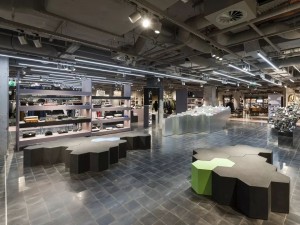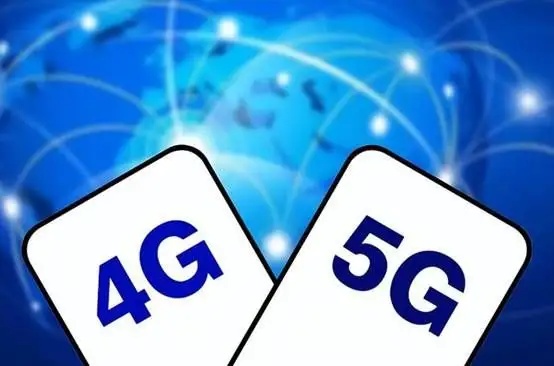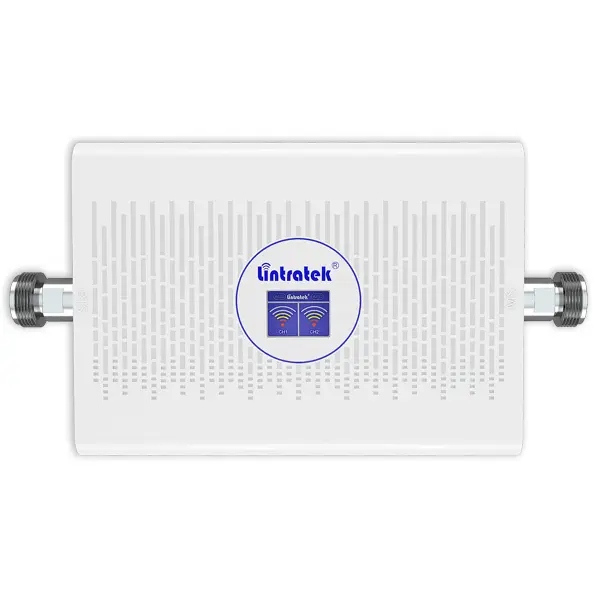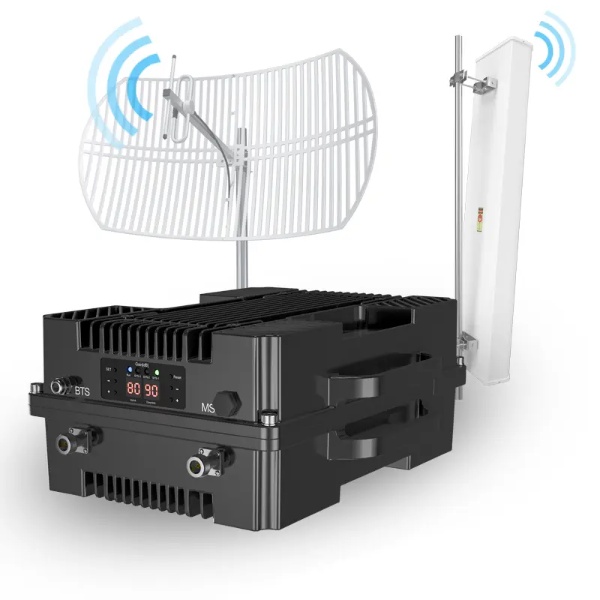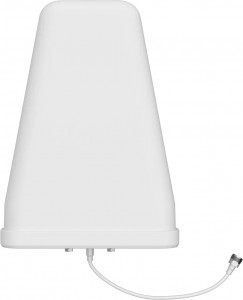In today’s rapidly advancing information age, cell phone signal repeaters play an indispensable role as critical devices in the communications field. Whether in urban skyscrapers or remote rural areas, the stability and quality of cell phone signal coverage are crucial factors that impact people’s quality of life. With the widespread adoption of technologies like 5G and the Internet of Things (IoT), the demands for signal transmission are continually increasing. Signal boosters, with their unique ability to enhance signal strength and expand coverage, have become key solutions for addressing signal transmission challenges. They not only improve transmission efficiency but also ensure communication stability and security, providing great convenience for people’s daily lives and work.
How to Choose the Cell Phone Signal Repeater ?
1.Determine Signal Type and Frequency Bands
Signal Type: The first step is to identify the type of cellular signal and frequency band you need to enhance.
For example:
2G: GSM 900, DCS 1800, CDMA 850
3G: CDMA 2000, WCDMA 2100, AWS 1700
4G: DCS 1800, WCDMA 2100, LTE 2600, LTE 700, PCS 1900
5G: NR
These are some common frequency bands. If you’re unsure about the frequency bands used in your area, feel free to contact us. We can help you identify the local cellular frequency bands.
2. Power Gain, Output Power, and Coverage Area of Cell Phone Signal Repeaters
Choose the appropriate power level of the cell phone signal repeater based on the size of the area where you need to enhance the signal. Generally, small to medium-sized residential or office spaces may require a low to medium power cellular signal repeater. For larger areas or commercial buildings, higher power gain repeater is needed.
A cell phone signal booster’s gain and output power are crucial parameters that determine its coverage area. Here’s how they relate and affect the coverage:
Lintratek KW23c Cell Phone Signal Booster
·Power Gain
Definition: Power Gain is the amount by which the booster amplifies the input signal, measured in decibels (dB).
Impact: Higher gain means the booster can enhance weaker signals, increasing the coverage area.
Typical Values: Home boosters usually have a gain of 50-70 dB, while commercial and industrial boosters can have gains of 70-100 dB.
·Output Power
Definition: Output power is the strength of the signal the booster outputs, measured in milliwatts (mW) or decibel-milliwatts (dBm).
Impact: Higher output power means the booster can transmit stronger signals, penetrating thicker walls and covering greater distances.
Typical Values: Home boosters usually have an output power of 20-30 dBm, while commercial and industrial boosters can have output power of 30-50 dBm.
·Coverage Area
Relationship: Gain and output power together determine the booster’s coverage area. Generally, a 10 dB increase in gain is equivalent to a tenfold increase in output power, significantly expanding the coverage area.
Real-world Impact: The actual coverage area is also influenced by environmental factors such as building structure and materials, interference sources, antenna placement, and type.
·Estimating Coverage Area
Home Environment: A typical home signal booster (with a gain of 50-70 dB and output power of 20-30 dBm) can cover 2,000-5,000 square feet (approximately 186-465 square meters).
Commercial Environment: A commercial signal booster (with a gain of 70-100 dB and output power of 30-50 dBm) can cover 10,000-20,000 square feet (approximately 929-1,858 square meters) or more.
Examples
Low Gain and Low Output Power:
Gain: 50 dB
Output Power: 20 dBm
Coverage Area: Around 2,000 square feet (approximately 186 ㎡)
High Gain and High Output Power:
Gain: 70 dB
Output Power: 30 dBm
Coverage Area: Around 5,000 square feet (approximately 465 ㎡)
KW35 Powerful Mobile Phone Repeater for Commercial Buildings
Other Considerations
Antenna Type and Placement: The type, location, and height of the outdoor and indoor antennas will affect the signal coverage.
Obstacles: Walls, furniture, and other obstacles can reduce the signal coverage, so optimization based on actual conditions is necessary.
Frequency Bands: Different frequency bands have different penetration abilities. Lower frequency signals (like 700 MHz) typically penetrate better, while higher frequency signals (like 2100 MHz) cover smaller areas.
Overall, gain and output power are key factors in determining the coverage area of a signal booster, but real-world applications also need to consider environmental factors and equipment configuration for optimal coverage.
If you’re unsure about how to choose a cell phone signal repeater, feel free to contact us. Our customer service team will quickly provide you with a suitable cellular signal booster solution and a reasonable quote.
3.Choosing Brand and Product
Once you know what type of product you need, the final step is choosing the right product and brand. According to statistics, over 60% of cell phone signal repeaters worldwide are manufactured in Guangdong Province, China, due to its comprehensive industrial chain and ample technical capabilities.
A good cell phone signal repeater brand should have the following qualities:
·Extensive Product Line and Excellent Performance
Lintratek has been in the cell phone signal repeater industry for over 12 years and offers an extensive product line that perfectly covers everything from small home units to large DAS systems.
·Durability and Stability Testing
Lintratek products undergo rigorous durability, waterproof, and drop tests to ensure reliability and performance.
·Compliance with Laws and Regulations
Lintratek’s cell phone signal repeaters are exported to over 155 countries and regions, and they have obtained communication and safety certifications from most countries (such as FCC, CE, RoHS, etc.).
·Expandability and Upgrades
Lintratek’s technical team can design expansion and upgrade solutions based on customer requirements to minimize future costs associated with communication technology upgrades.
·Maintenance and After-Sales Service
Lintratek has a technical and after-sales service team of over 50 people, ready to meet your needs at any time.
·Project Cases and Success Experience
Lintratek has extensive experience with large-scale projects. Their professional DAS systems are used in tunnels, hotels, large shopping malls, offices, factories, farms, and remote areas.
Post time: Jul-24-2024








